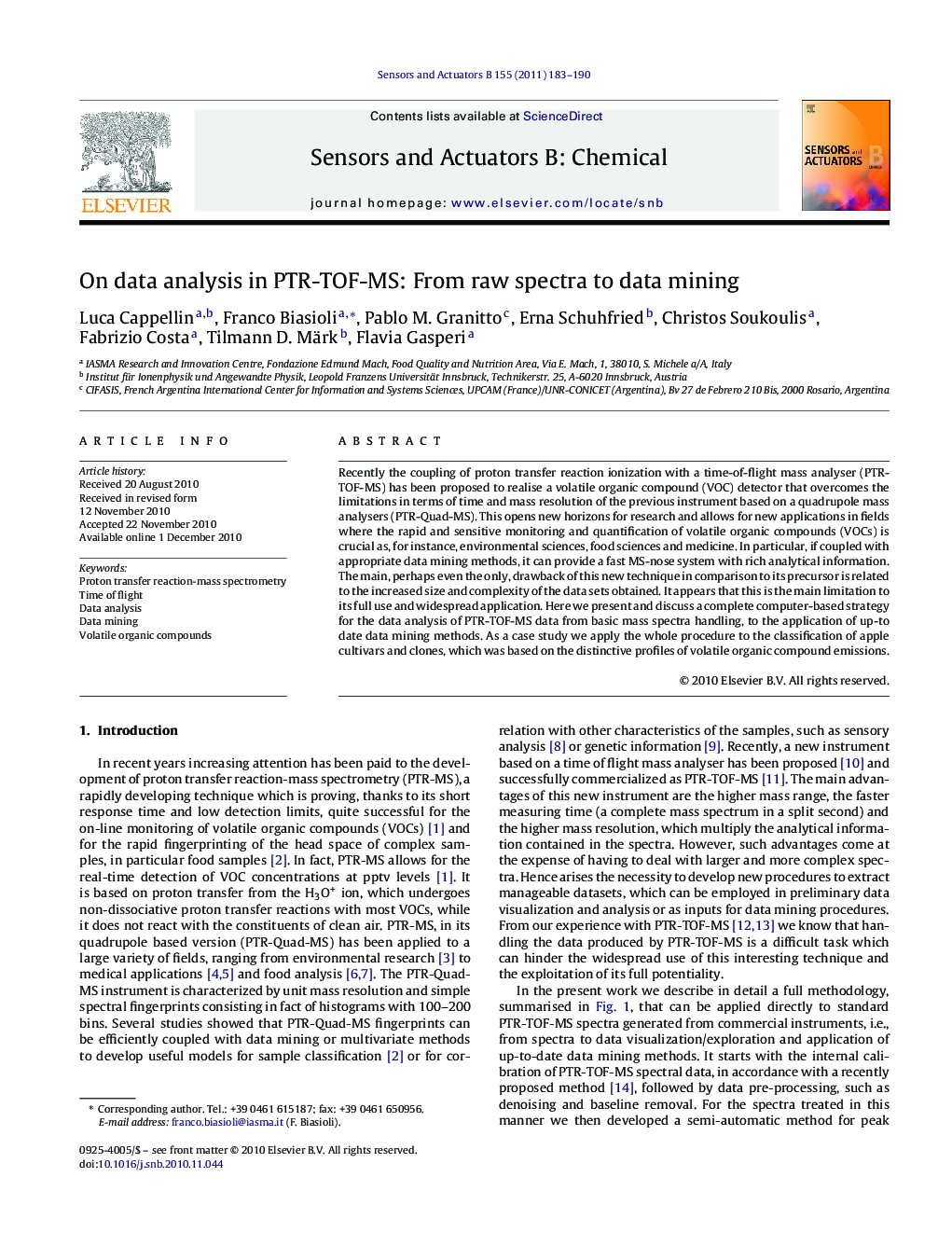| Article ID | Journal | Published Year | Pages | File Type |
|---|---|---|---|---|
| 745963 | Sensors and Actuators B: Chemical | 2011 | 8 Pages |
Recently the coupling of proton transfer reaction ionization with a time-of-flight mass analyser (PTR-TOF-MS) has been proposed to realise a volatile organic compound (VOC) detector that overcomes the limitations in terms of time and mass resolution of the previous instrument based on a quadrupole mass analysers (PTR-Quad-MS). This opens new horizons for research and allows for new applications in fields where the rapid and sensitive monitoring and quantification of volatile organic compounds (VOCs) is crucial as, for instance, environmental sciences, food sciences and medicine. In particular, if coupled with appropriate data mining methods, it can provide a fast MS-nose system with rich analytical information. The main, perhaps even the only, drawback of this new technique in comparison to its precursor is related to the increased size and complexity of the data sets obtained. It appears that this is the main limitation to its full use and widespread application. Here we present and discuss a complete computer-based strategy for the data analysis of PTR-TOF-MS data from basic mass spectra handling, to the application of up-to date data mining methods. As a case study we apply the whole procedure to the classification of apple cultivars and clones, which was based on the distinctive profiles of volatile organic compound emissions.
